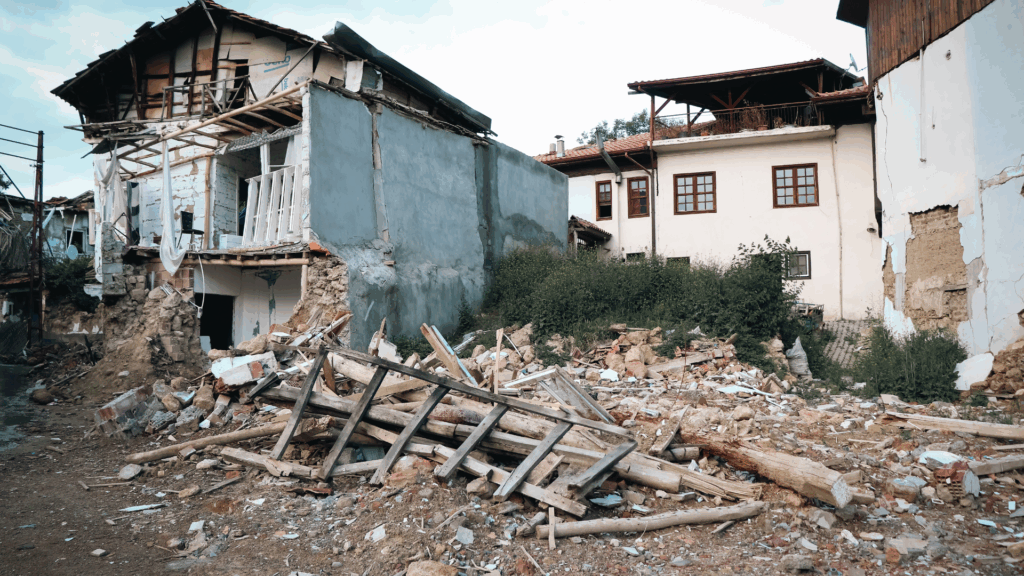Managing your finances
7 Shocking Things Your Home Insurance Doesn’t Cover (But Should)
May 7, 2025

You bought the house. You pay the premium. You sleep soundly knowing your insurance has your back... right?
Hate to break it to you, but your standard homeowners insurance policy might be more fine print than safety net. And unless you've read all 40 pages of it (lol), you're probably missing a few costly gaps.
If you consider yourself financially savvy, consider this your wake-up call: knowing what’s not covered is just as important as knowing what is.
1. 💧 Mold Damage? Probably Not Covered
If you’ve got a slow leak or high humidity causing mold, most policies will shrug and say: “Not our problem.” Unless the mold came from a covered peril (think burst pipe, not your swampy basement), you’re likely paying out-of-pocket.
2. 💎 Your Fancy Stuff Has Limits
Think your $10K engagement ring or watch collection is fully covered? Nope. Standard policies cap jewelry, electronics, and art coverage—often around $1,000–$2,500. If you’ve got high-value items, you need a scheduled personal property rider. Fancy name, necessary move.
3. 🚫 Earthquakes and Floods = Not a Thing (Unless You Add Them)
Repeat after us: standard policies don’t cover floods or earthquakes. These are separate policies—usually government-backed or offered through specialty insurers. One storm, one shift of tectonic sass, and boom—your basement becomes an indoor pool, unpaid for.

4. 🐍 Infestations? You’re On Your Own
Termites, mice, bats, bedbugs—unless they’re starting a garage band called “Peril,” your insurer doesn’t care. Why? Because pest damage is considered preventable. In the eyes of insurance, you're expected to keep your house clean and critter-free.
5. 👷 Renovation Mishaps = Maybe, Maybe Not
DIY gone wrong? Contractor slipped and crashed through your floor? Don’t assume your policy has it covered. If you didn’t inform your insurer about the reno, they might deny your claim—especially if you hired unlicensed labor or didn’t update your dwelling value.
Pro tip: Always update your insurer before major upgrades or risk paying for damage twice—once in dollars, once in regret.
6. 🏚️ Vacant Homes = Coverage Gaps Galore
If your home sits empty for 30–60+ days (varies by insurer), your policy could go poof. You’ll need a vacant home endorsement or a separate policy. Why? Empty homes = higher risk = insurers get twitchy.
7. 📉 Depreciation Can Bite You
Here’s the kicker: some policies reimburse you based on actual cash value (ACV), not replacement cost. That means your 10-year-old roof? They’ll pay you what it’s worth now, not what it costs to replace. Which is... not a vibe.
Smart move: Upgrade to a replacement cost policy. It costs more up front, but future-you will send a thank-you note.
What Homeowners Insurance Does Cover (Generally)
Just so we’re not total doomsayers, here’s what most standard HO-3 policies do cover:
- Fire, lightning, smoke damage
- Windstorms (but not hurricanes in some states)
- Theft and vandalism
- Falling objects (trees, not satellites)
- Accidental water damage (but not flooding)
Still, every policy is different, and exclusions are sneakier than your neighbor who “borrows” your hedge trimmer indefinitely.
The Financially Savvy Takeaway
If you're tracking your net worth with spreadsheets, but haven’t reviewed your policy in three years, it's time to get serious. Understanding your home insurance is just risk management in disguise.
- Audit your policy yearly
- Add endorsements where you’re exposed
- Ask your insurer questions like you’re a lawyer in a crime drama
Because when disaster hits, the last thing you want is to learn you’re only covered for “Acts of God” and not acts of reality.
Subscribe to Our Newsletter
Newsletters usually suck. Ours doesn’t. Smart, fearless advice delivered straight to your inbox.

Traveling best
Various versions have evolved over the years, sometimes by accident sometimes on purpose.
Traveling best
Various versions have evolved over the years, sometimes by accident sometimes on purpose.
GET STARTED NOW


